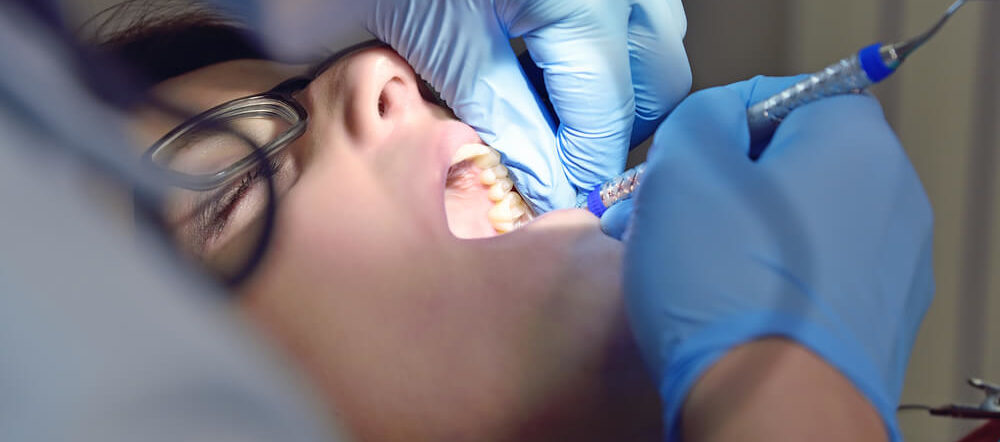
16 Jun What Are Ambulatory Surgical Procedures?
At its foundation, ambulatory surgical procedures refer to the ability for a patient to leave the hospital or medical facility the same day of the surgery without being admitted. There are several other names for ambulatory surgeries, such as:
- Outpatient surgery
- Same-day procedure (surgery)
- Minimally invasive surgery
With that being said, there are some distinctions to be made within these commonly interchanged terms. While the term same-day surgery is virtually synonymous with ambulatory surgical procedures, minimally invasive surgery is laparoscopic surgery. We’ll dive deeper into this specific type of procedure later in the article.
For now, let’s explore some technicalities (along with some nuances) associated with ambulatory surgical procedures.
A Gray Area
Many procedures allow for the patient to go home the same day. Because of this, medical procedures such as colonoscopies or endoscopies are referred to as same-day procedures, even though they are not technically ambulatory surgical procedures.
Additionally, many dental surgeries are considered ambulatory surgeries as well. This is because most dental surgeries do not require a patient to stay overnight or be monitored after their procedure. A few of the more common ones include:
- Wisdom tooth extraction
- Root canals
- Dental implants
Lastly, we mentioned the term “minimally invasive surgery.” This term is often used to describe a wide range of ambulatory surgeries such as robotic surgery or endoscopic surgery. In robotic surgery, the surgeon is assisted by robotic arms which allows more precision. Laparoscopy is one type of endoscopic surgery, which focuses on the abdominal organs while arthroscopic surgery focuses on the knee.
A laparoscopy (or keyhole) surgery is a delicate operation that takes advantage of a very small video camera on the end of a slender tool. A tiny incision is made, and a surgeon is able to carefully insert the camera into the patient and monitor what is happening on the inside without making a large opening. Although the term minimally invasive surgery is often used in tandem with ambulatory surgical procedures, laparoscopy is frequently not a same-day operation. Patients will need to be monitored for at least a few days in the hospital.
What are the Advantages of Outpatient Surgery?
Compared to traditional inpatient surgery, there are several benefits associated with ambulatory surgical procedures for both the medical facility and the patient.
- Ease: Recovery at home is a more convenient and relaxing experience than a stay at the hospital.
- Affordability: Costs associated with ambulatory procedures are much lower for both the patient and the facility. This is especially true for some insurance companies that only cover outpatient operations.
- Easier scheduling: In a hospital and healthcare setting, outpatient procedures minimize scheduling conflicts and issues.
6 Common Types of Ambulatory Surgical Procedures
There are dozens of ambulatory surgical operations. We’ve explored the nuances and gray areas already. Now, all of the procedures listed in this section are true ambulatory surgeries.
1. Small Joint, Tendon, & Muscle Repair
Procedures on ankles, wrists, or hands are often outpatient (ambulatory) operations. This is especially true for those with arthritis who require tendon replacement surgery on hands and wrists.
2. Cataracts Surgery
When an eye’s natural lens clouds up, a cataract may occur. While many individuals live perfectly fine with this condition, at some point, it may interfere with daily living. Cataract surgery to remove and replace the cataract with an artificial lens is typically an outpatient surgery.
3. Lumpectomy
Removing a cancerous tumor and breast tissue is called a lumpectomy. If lymph nodes are removed as well, this procedure is typically not an outpatient surgery. However, you can usually have a lumpectomy as an ambulatory surgical procedure.
4. Carpal Tunnel Surgery
Carpal tunnel syndrome, which can cause severe pain or even numbness in the hands, can sometimes be alleviated with the help of a splint. If that doesn’t have the desired effect, outpatient carpal tunnel surgery with the help of a local anesthetic is considered an ambulatory procedure.
5. Meniscus Repair
Another common ambulatory surgical procedure is meniscus repair. This common sports injury requires an outpatient procedure to trim or repair a torn meniscus.
6. Various Nose & Mouth Procedures
There are several oral and nasal operations that are considered ambulatory surgeries or operations. Two of the most common procedures include a tonsillectomy and the removal of nasal polyps. Both of these procedures allow a patient to return home the same day.
These are just a handful of the most typical outpatient procedures. However, there are dozens of common operations and ambulatory surgeries routinely performed in hospitals every day. These include, but are not limited to:
- Arthroscopy
- Breast Biopsy
- Burn Excision/Debridement
- Caesarean Section
- Circumcision
- Dental Restoration
- Gastric Bypass
- Head and Neck Surgery
- Hysterectomy (Abdominal or Vaginal)
- Knee/Hip Replacement
- Laparoscopy
- Liver Resection
- Lung Resection
- Major Abdominal Procedure
- Major Vascular Surgery
- Mastectomy (Radical)
- Mediport Insertion or Removal
- Prostate Surgery
- Removal of Hardware (Plates and Screws)
- Sinus Endoscopy
- Tubal Ligation
- Vasectomy
- Ventral Hernia
Where are Ambulatory Surgical Procedures Performed?
Outpatient or same-day surgeries are performed in a wide range of medical settings. These include freestanding satellite medical centers and ambulatory surgery centers which can be either independent or part of a local hospital as well as same day surgery departments within a hospital.
Some ambulatory operations may be performed in the healthcare provider’s office. However, these are limited to a subset of outpatient procedures.
Safety and Administrative Recommendations for Ambulatory Settings
- Develop and maintain both occupational health programs and infection prevention and control programs.
- Provide sufficient availability of needed supplies outlined in Standard Precautions such as PPE, injection equipment, hand hygiene products, and more.
- Have at least one employee with sufficient infection prevention training to maintain the facility’s infection prevention program or engage a consultant to perform periodic on-site infection control assessments and develop the infection control program.
- Develop written infection prevention and control policies in adherence to evidence-based guidelines, regulations, or standards.
Additionally, task or job-specific training should be available to all healthcare personnel (HCP) in the facility regarding ambulatory surgical safety protocols. Training should be conducted upon hire and be ongoing to ensure adherence to shifting policies and guidelines. It’s also important to document competencies after each training program.
Wrapping Up
Ambulatory surgical procedures are a crucial part of many hospital and healthcare settings. It’s important to understand the subtle nuances and terminology associated with ambulatory procedures to ensure that both patients and staff are on the same page, especially regarding facility protocols.
There are many benefits to outpatient procedures, including cost, convenience, and scheduling. Hopefully, this article was able to shed some light on the world of ambulatory surgeries, common procedures, and infection prevention and control recommendations in an ambulatory setting.

